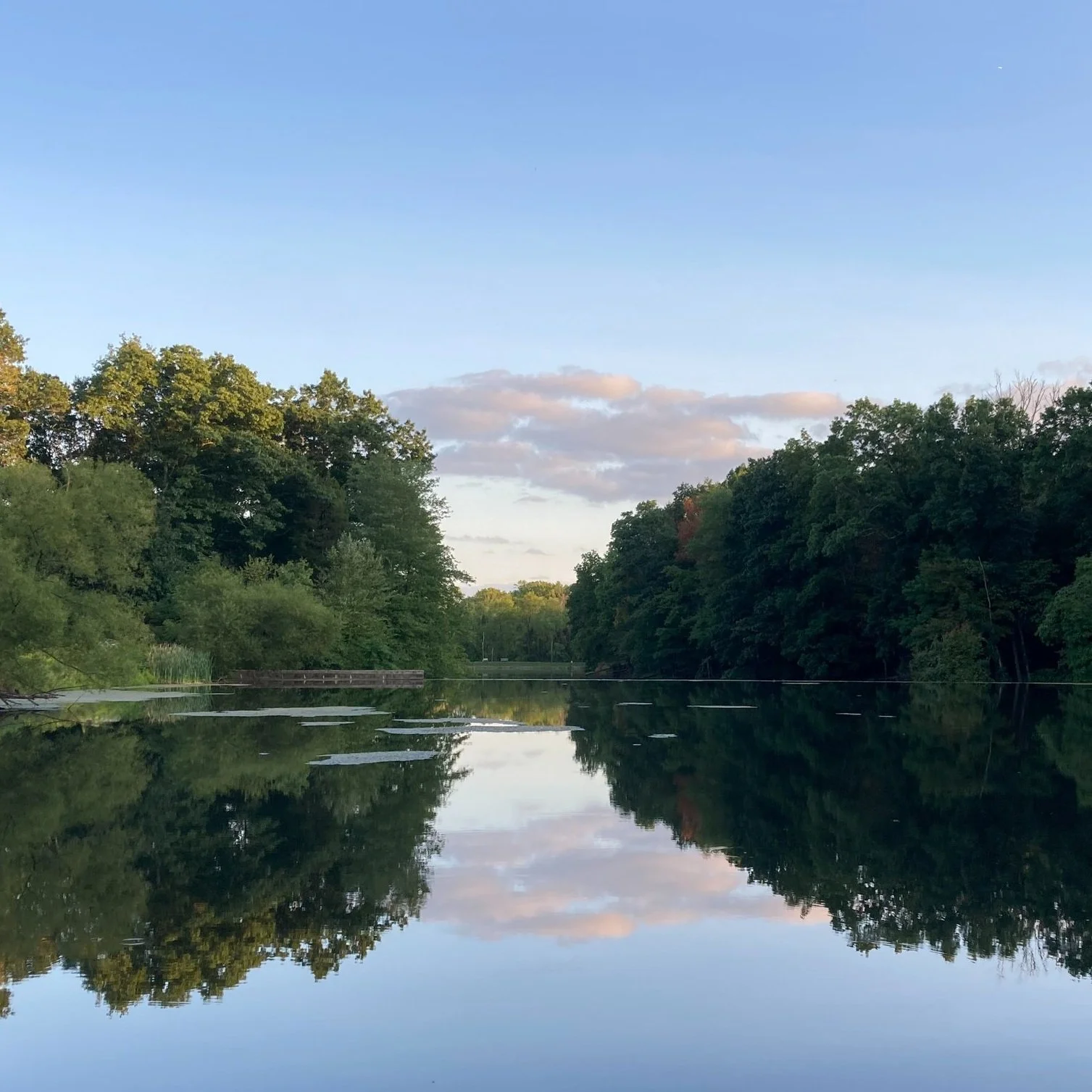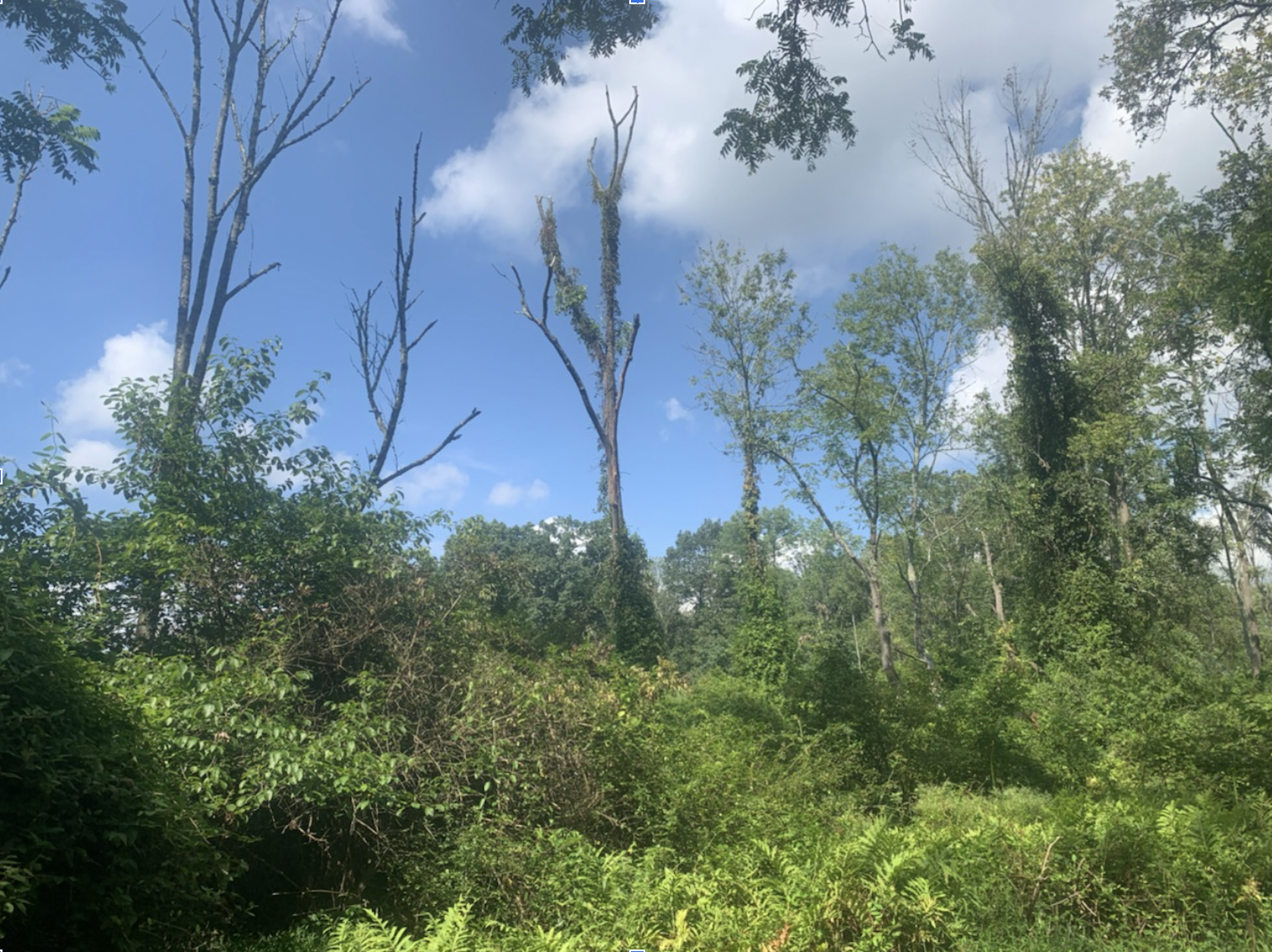Earth Day 2025: Restore the Lakeshore
Support the 25-acre Riparian Restoration Project this Earth Day
Celebrate Earth Day 2025 by protecting the riparian ecosystem around Mountain Lakes. Riparian zones - where the land meets water - are essential for wildlife, water purification, and flood prevention. However, invasive species are threatening the delicate balance of this ecosystem. We’re launching the next phase of our 25-acre Riparian Restoration Project to restore the southern lakeshore’s natural beauty and ecological health.
Together, we can make this goal a reality.
Currently, this 6-acre riparian site features a sparse, dead ash tree canopy. The understory is overtaken by invasive privet and honeysuckle, with vines climbing tree trunks and smothering the remaining native vegetation.
The Challenges We Face
Invasive plants like porcelain berry, privet, and Japanese honeysuckle are degrading the environment, reducing biodiversity, and impacting water quality. This is more than just a restoration project; it’s an opportunity to protect and nurture a local sanctuary for wildlife and our community. Through your support, we will restore the lakeshore, enhance biodiversity, and create lasting benefits for future generations in our region.
Whether you donate or volunteer, you can be part of this transformative, local effort.
Take Action with FOPOS This Earth Day
Phase 1:
Invasive Species Removal
A 6-acre section of the project site is heavily overtaken with invasives and the removal is beyond the capacity of our volunteers. We seek help from donors to contract professional services for the removal of invasives in these areas. Once the contracted work is complete, our dedicated stewardship team and volunteers will continue to manage invasive plant removal.
Our goal is $30,000, which covers both the contracted removal and tools for our land stewardship volunteer program.
Will you support this critical effort with a donation to FOPOS?
$500 funds the removal of invasive plants from 1/10th of an acre
$100 funds freeing a grove of trees from invasive vines and shrubs
$25 funds the purchase of tools for volunteers to aid in removal efforts
Phase 2:
Restoring Biodiversity with Native Plants
Species like willows, magnolias, and swamp white oaks, along with understory plants like hibiscus, swamp milkweed, and cardinal flowers will restore biodiversity and enhance the lakeshore’s ecological health. Protective caging will help these plants thrive, preventing damage from deer and beaver.
Our goal is to plant 1,640 native trees, shrubs, and herbaceous plants to restore the area's biodiversity and ecological health.
Will you bring new life and native flora back to the lakeshore?
$100 funds one large native tree (ball and burlap)
$50 funds one containerized shrub or tree
$30 funds a bundle of 10 native herbaceous plants - wildflowers, grasses, ferns
Support Our People-Powered, local Restoration Movement
This project is powered by our local community - volunteers, donors, and land stewardship team working together toward our mission. Your involvement builds knowledge, skills, and a shared commitment to improving our region’s ecosystems.
This work builds resilience, fosters connection, and strengthens the future of the greater Princeton area.
Restoration projects like this create public recreational spaces, revitalize habitats, and store carbon - delivering incredible benefits to our community and the environment. Every action, big or small, drives progress forward.
Will you join our people-powered, locally-led restoration movement?
Commit to 10 hours volunteering for our riparian restoration project during 2025
Help fund an intern position to support the restoration throughout the summer





